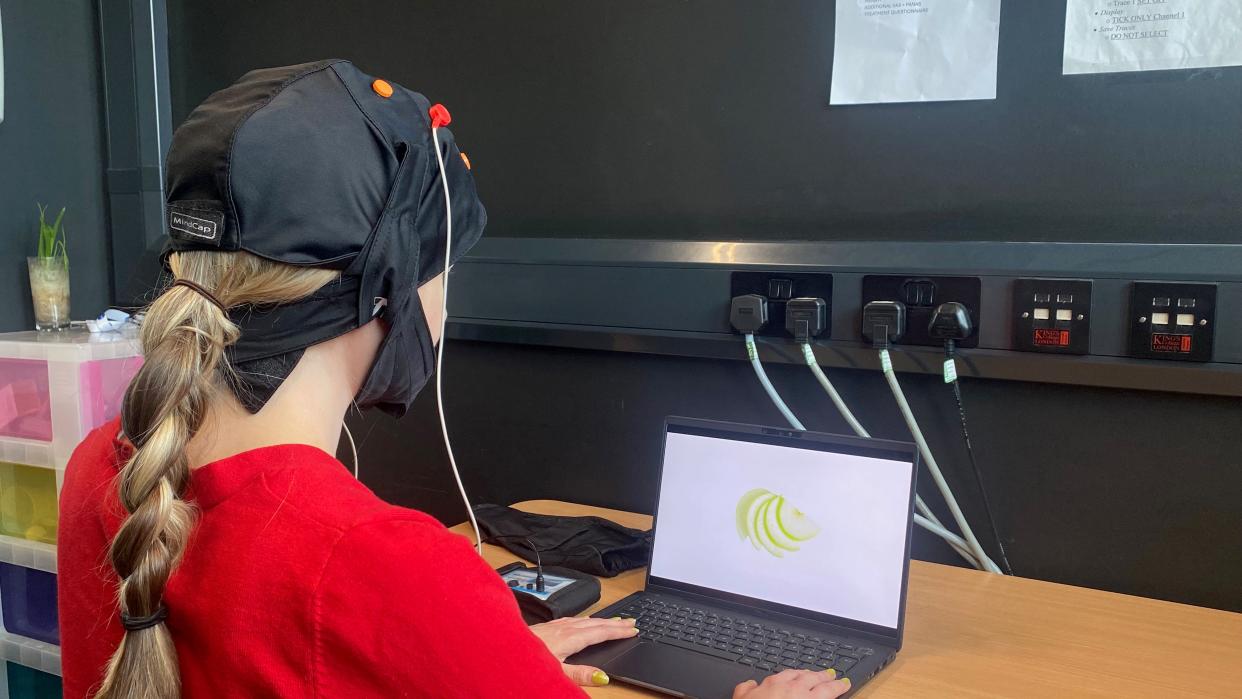New home treatment for binge-eating disorder shows promising results – study

Electrical brain stimulation at home, combined with a type of brain training, has been shown to help reduce binge-eating episodes and help people lose weight.
The study found that in people who received the combination, binge episodes were reduced from about 20 times a month on average, to six times a month six weeks later.
People in this group also reported that they lost between 3.5kg and 4kg from the start of the study to the six-week follow-up.
Dr Michaela Flynn, research associate at the institute of Psychiatry, Psychology and Neuroscience (IoPPN) at King’s College London, and first author on the study, said: “Current treatments for binge-eating disorder are only effective for some people and many need further or different support to get well.
“Our study is the first to look at a new option for home-based treatment that offers a different approach to treating binge-eating disorder.”
The gentle brain stimulation technique called transcranial direct current stimulation (tDCS) targets patterns of behaviour that might be contributing to the loss of control around food, enabling people to shift entrenched thinking and behaviour around food.
Dr Flynn added: “Participants commented that their mood felt lighter, which may be a key part of why they reported changes in eating behaviour and weight loss that lasted for some time after treatment ended.
“Our findings are encouraging, and we want to explore this on a larger scale with more participants.”
Binge-eating disorder (BED) is a serious mental illness that can affect anyone of any age, gender, ethnicity or background.
People with the disorder have recurring episodes of losing control over their food intake, consuming lots of food in a short period of time until they are uncomfortably full.
The condition is typically accompanied by anxiety and low mood and linked to obesity and metabolic complications.
The small study only included 82 people who were overweight or living with obesity and fit the BED criteria, split into four groups.
One group received 10 sessions of combination therapy of at-home self-administered tDCS during attention bias modification training (ABMT).
ABMT was completed on a laptop or desktop computer and lasted 10-15 minutes, and people were trained to look toward low-calorie food cues and look away from high-calorie food cues.
The brain stimulation was delivered using specialist equipment designed for at-home self-administration, which included a head cap with electrodes attached.
In comparison with those who received the combination therapy, those who received ABMT with sham tDCS reported that they lost about 1.5kg to 2 kg on average.
Ulrike Schmidt, professor of eating disorders at King’s IoPPN, and co-author said: “Binge-eating disorder is a really neglected, but common and distressing eating disorder that is typically surrounded by a lot of shame.
“The treatment we tested is home delivered, which allows it to reach people who may find it difficult to come into the community.
“For some time eating disorder services have not been funded to work with or treat people with binge-eating disorder. Importantly the treatment described here is straightforward to deliver making it potentially highly scalable in the NHS.”
The findings are published in the BJPsychOpen journal.

 Yahoo News
Yahoo News 
